Possible Futures
Mixed media installation. 2021.
Variable dimensions.
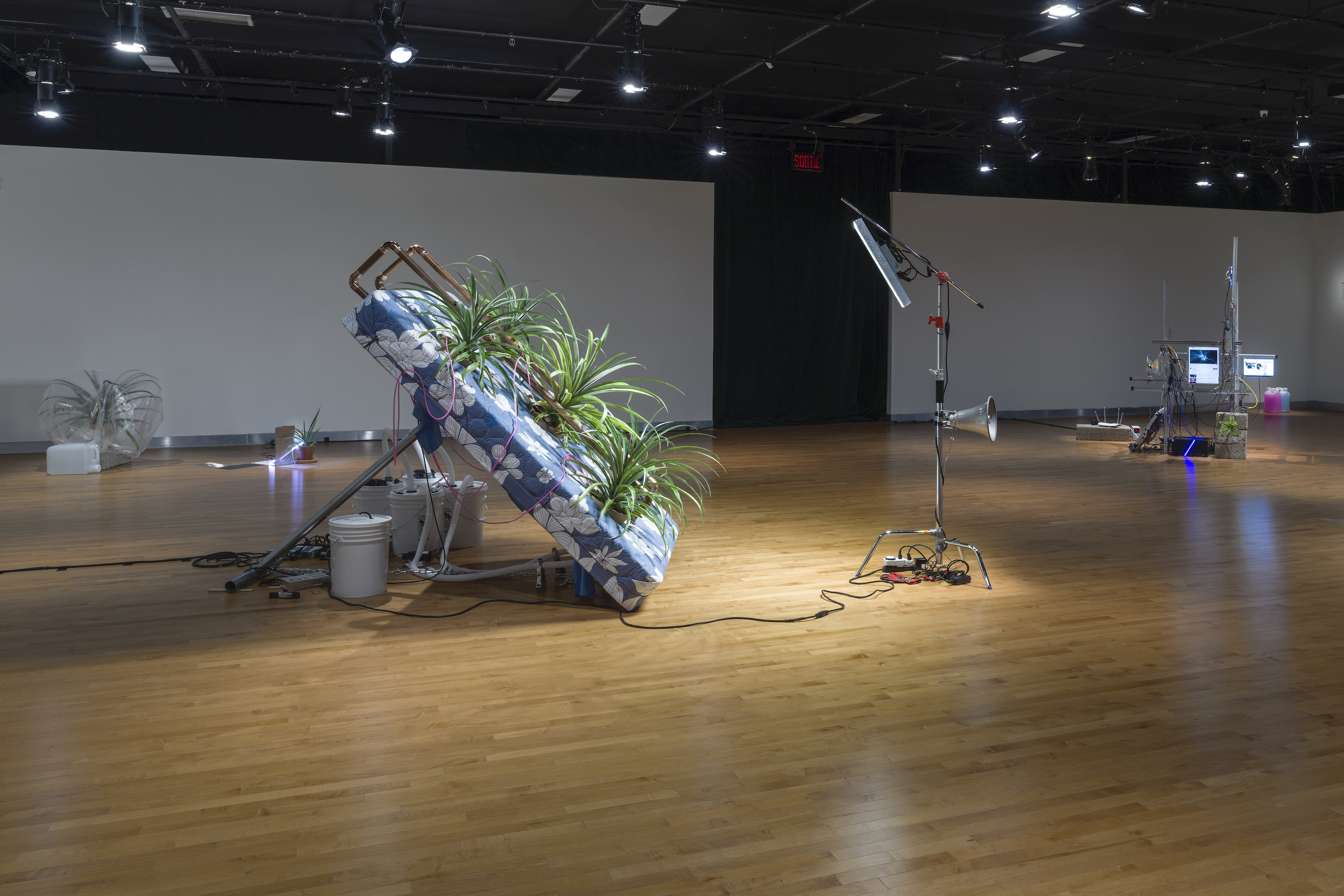
Possible Futures speculates on absurd-yet-plausible arrangements and relationships between discarded domestic objects, biological and artificial ecosystems, and techno-cultural artifacts. These uncanny scenarios - oblique thought-experiments synthesizing the material and ephemeral - simultaneously point to a multitude of ambiguous futures while informed by the conflicting zeitgeists of our present: DIY environmentalism, luxury furniture design, YouTube survivalism, automated smart homes, tech-waste, and artificial intelligence.
Through an iterative approach to conceptual and material investigations, the works develop future scenarios that reject the myopic polarity of utopic and distopic premonitions. While making tentative proposals and uneasy predictions, the exhibition attempts to reconcile our most human qualities of ingenuity and hubris, the vitally necessity of - and tragic limits to - the human imagination in confronting the future.
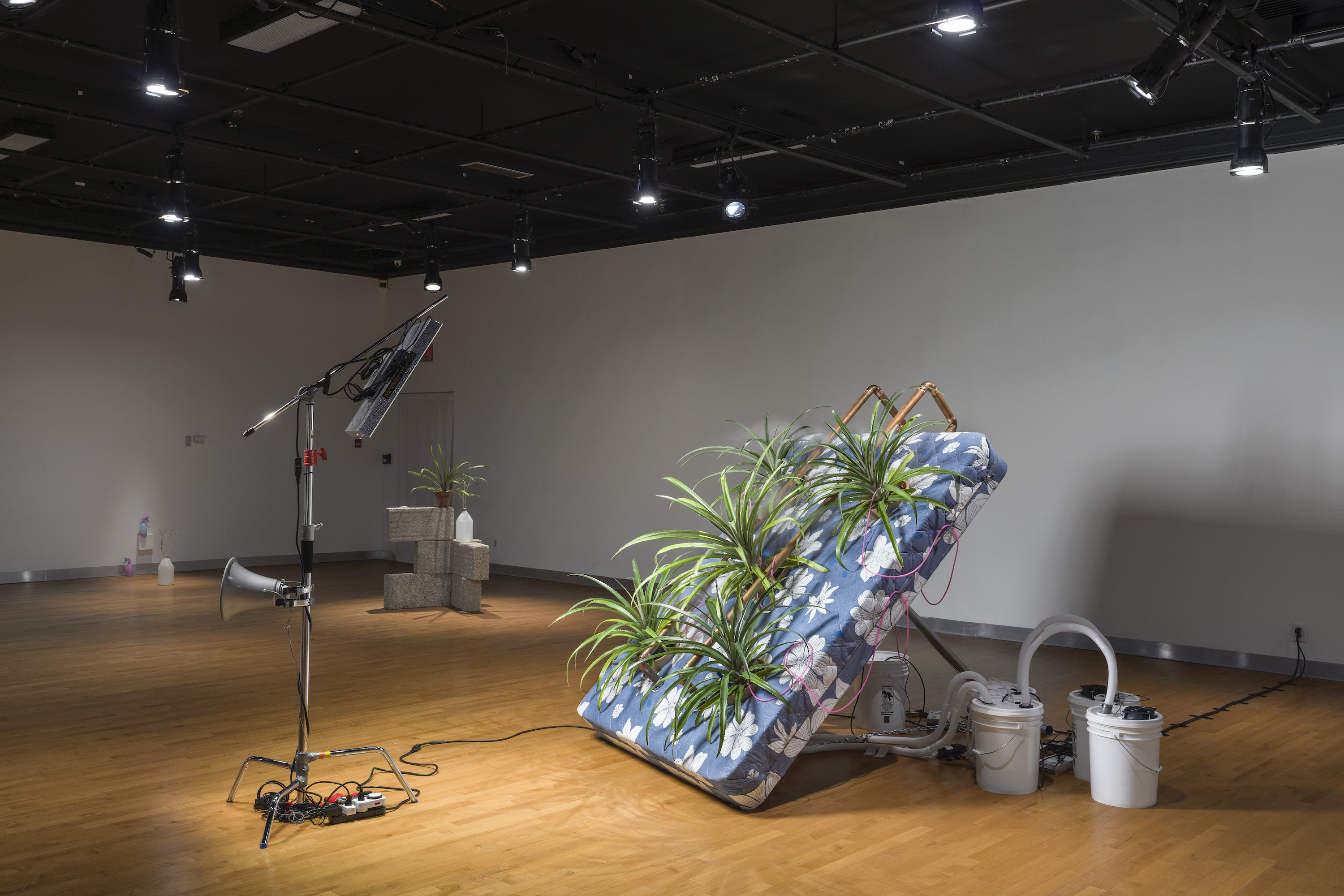
Raised Bed (Tropical Dream) appears as a propped-up discarded mattress, embedded with five mature Pineapple plants and a technologically-mediated life support system providing adequate light, water, and humidity.
Taking inspiration from discarded mattresses observed leaning on street-corners, the designs of early greenhouses, and the economic legacies of domestication, colonization, and importation, the object is positioned somewhere between a possible design and a plausibly spontaneous accident.
The pineapple is the most economically-significant tropical plant, an ironic fact given the difficulty of producing fruit: a plant requires 2-3 years to reach maturity, flower production is inconsistant, the ripening period from flower to fruit reaches 6 months, and each plant will only produce one fruit over its lifetime. Despite all this, and the distance travelled during importation, the pineapple remains a surprisingly common, affordable fruit in North American markets.
The pineapples were grown from small clones over a two-year period in the artist’s studio with the intention of induce its magnificent magenta flower. During this time, they were provided artificial tropical conditions. Several failed attempts at inducing pineapple inflorescence, as well as an accounting of the overall energy use of the work, are recounted in a 35 minute sound track, voiced through the ambiguous perspective of a text-to-speech algorithm.
The work oscillates between two absurd thought experiments: given the rate at which we discard furniture, and the rate in which they would fully decompose, at what point does the world contain more mattresses than people to sleep on them? And following, given the rate of global temperature increase, at what point does the arctic circle become an ideal tropical environment in which to grow pineapples?
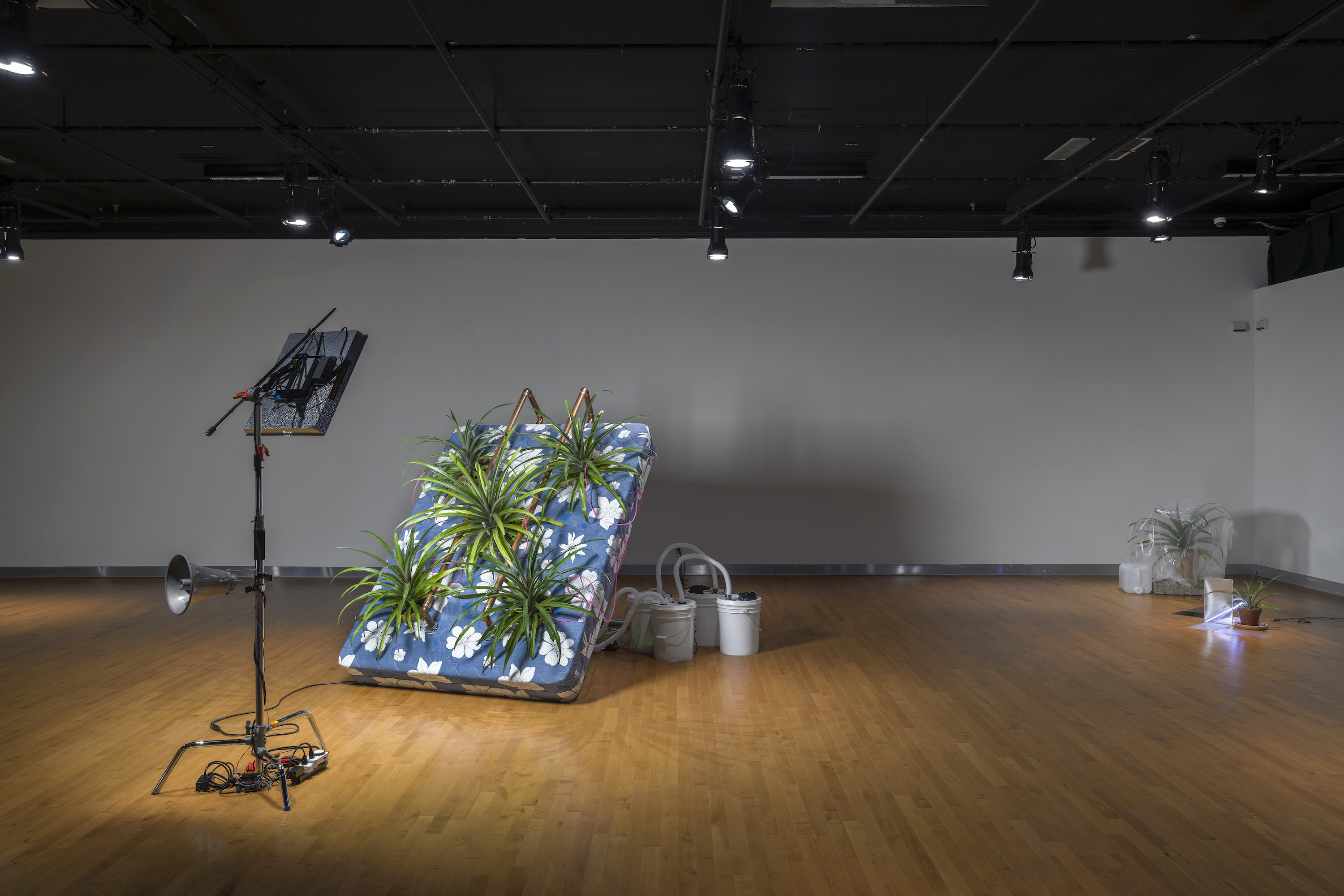
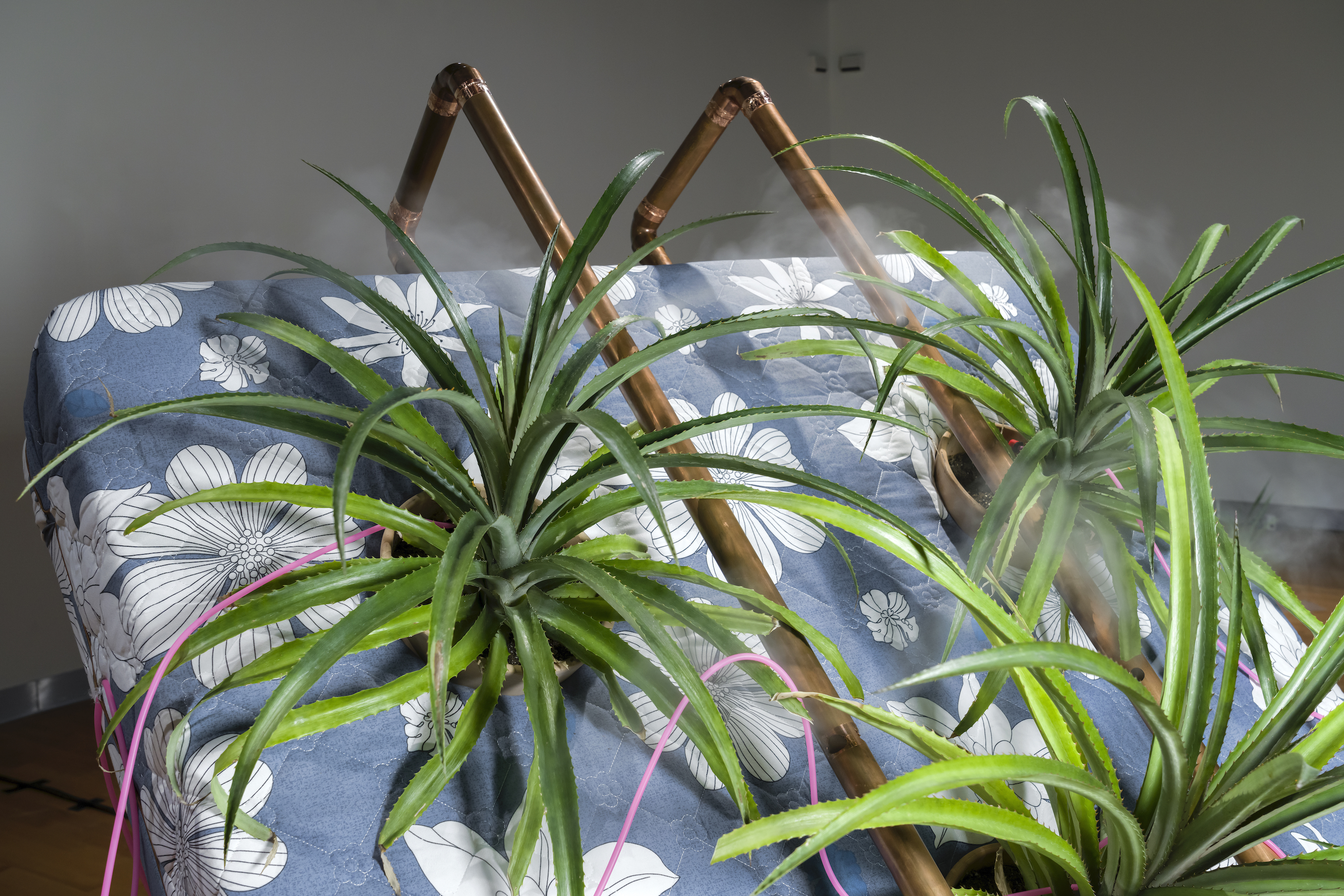
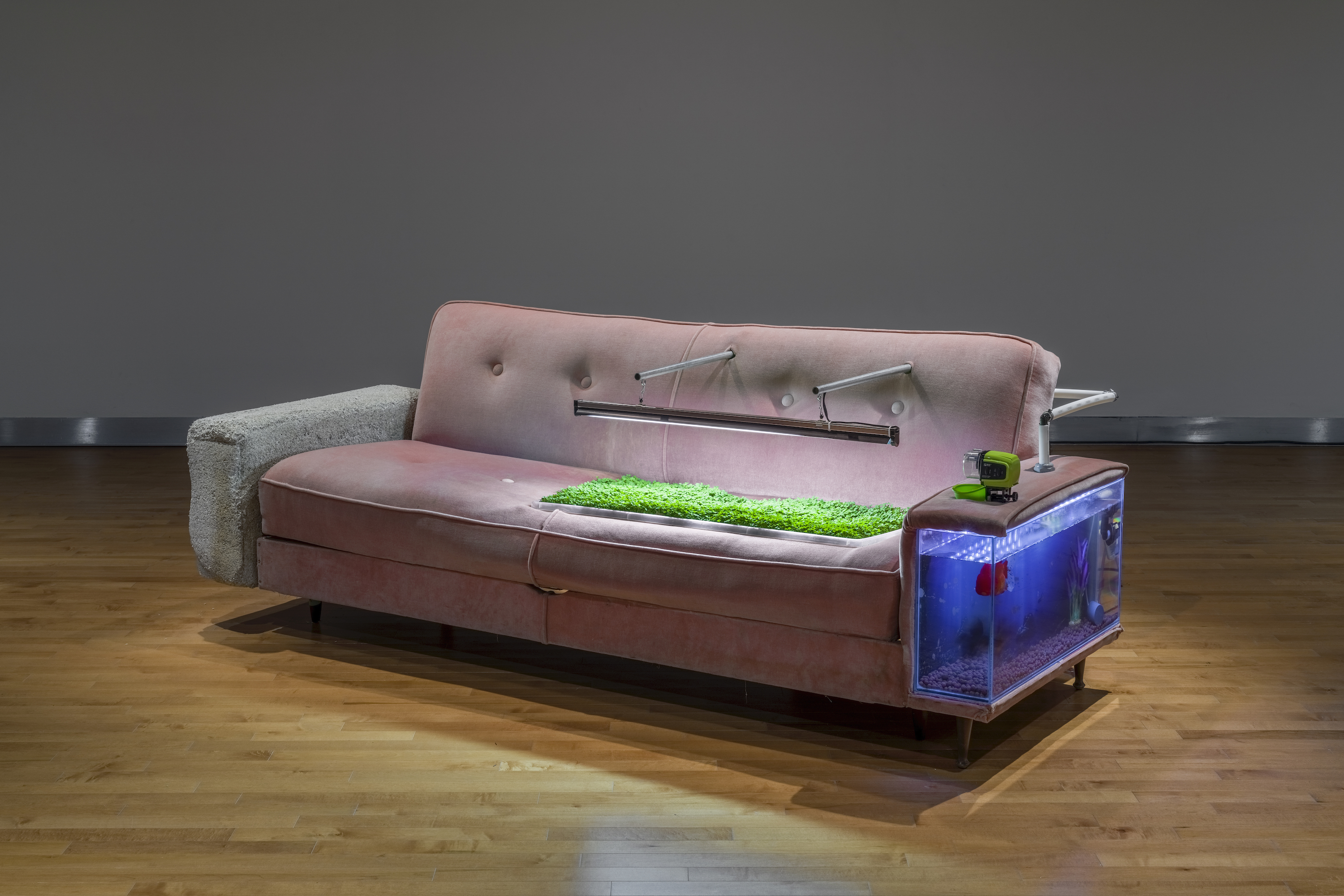
Future balanced (Chesterfield) is comprised of a discarded sofa absurdly modified to contain a miniature, fully-functioning, aquaponic farm.
An aquaponic system is a (nearly) closed, self-balancing ecosystem, in which fish waste (ammonia) is transformed to plant food (nitrate) through the collaborative actions of two bacteria cultures. As plants and bacteria are nourished, they act as a biological water filter, providing continuos clean water for the fish. An ancient farming technique developed in Asia and South America around 1000 CE and “re-discovered” in the 1960s, it is a common topic of discussion and experimentation in online DIY sustainable farming communities.
Much like the designed and mass-produced sofa which houses them, Fancy Goldfish are the result of human design and selective breeding for aesthetic qualities over the past millennia. Such species are no longer able to survive in the wild, requiring a carefully constructed human environment void of competition. Within the sofa, the fish waste nourishes a lush bed of Arugula baby-greens.
The opposite arm of the sofa, which had been broken off prior to its discarding, is re-constructed with hempcrete, a sustainable carbon-sequestering alternative to fibreglass insulation.
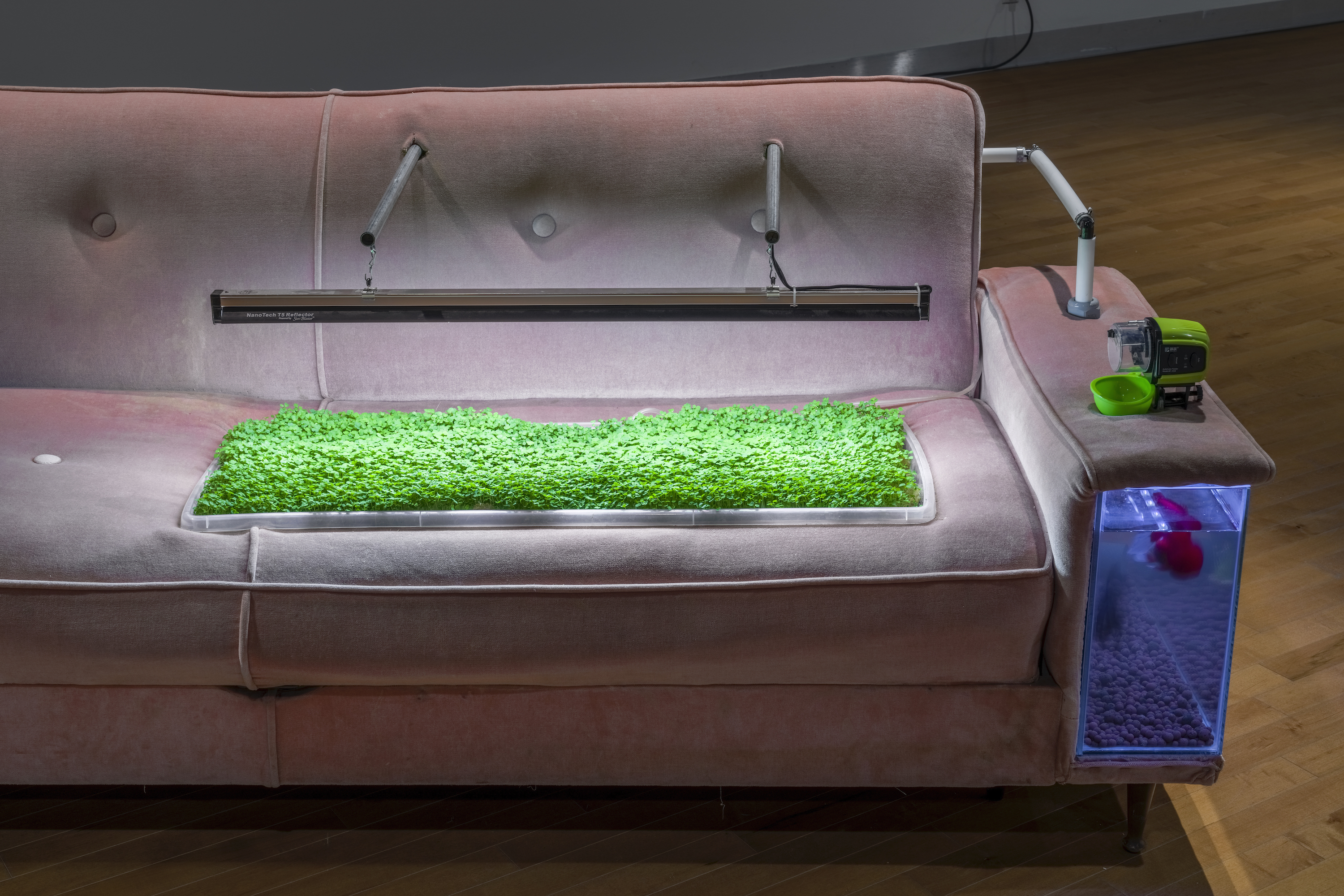
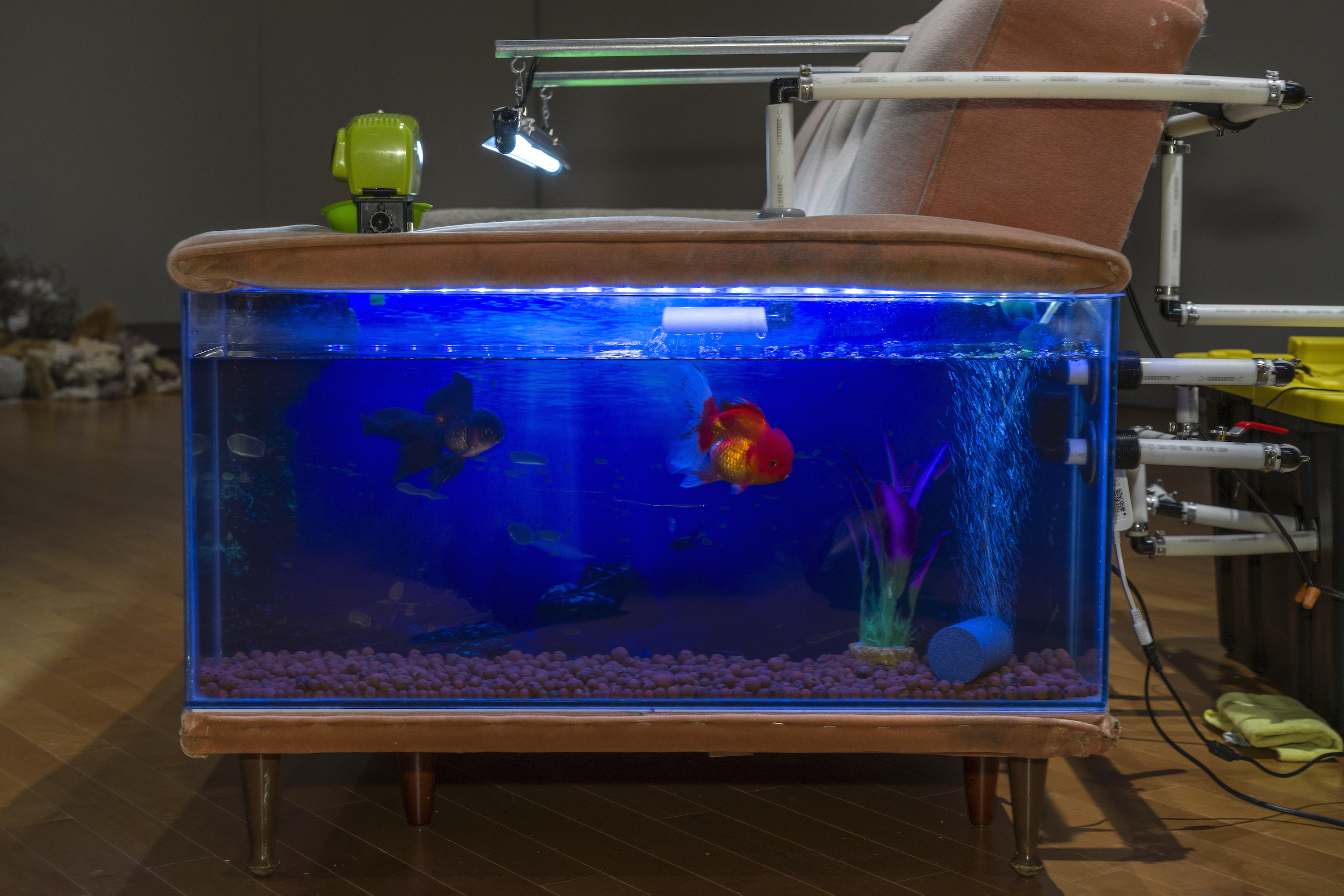
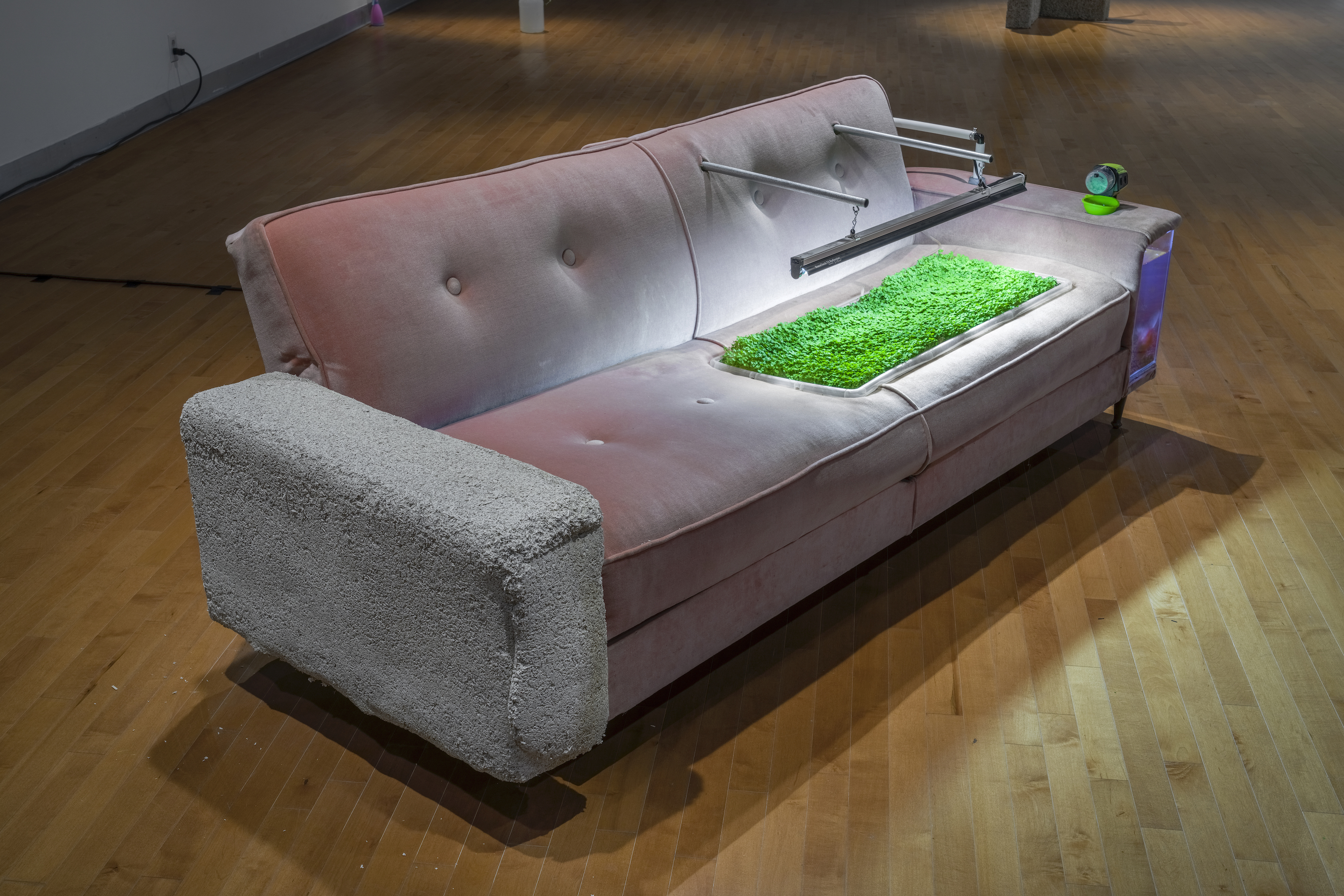
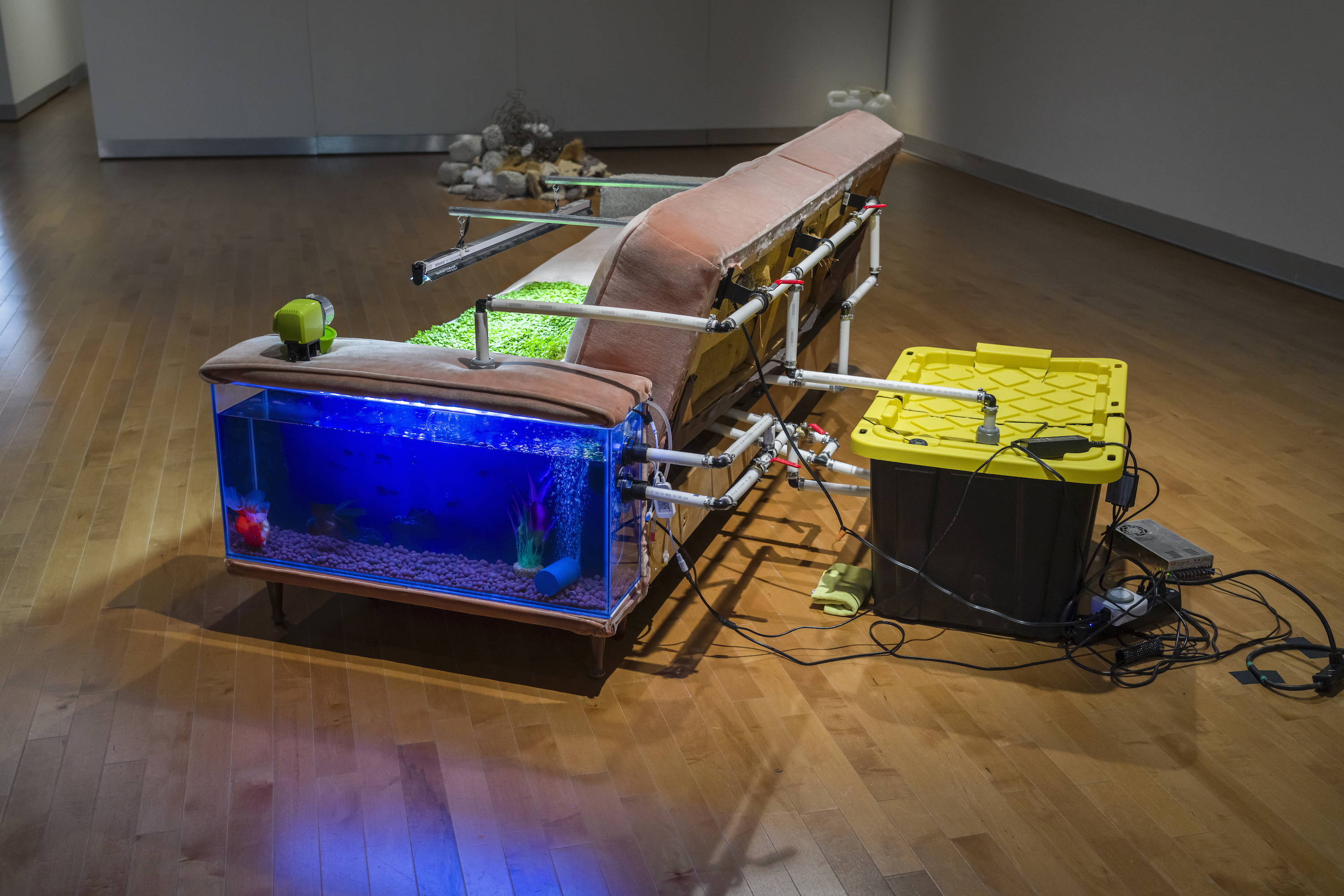
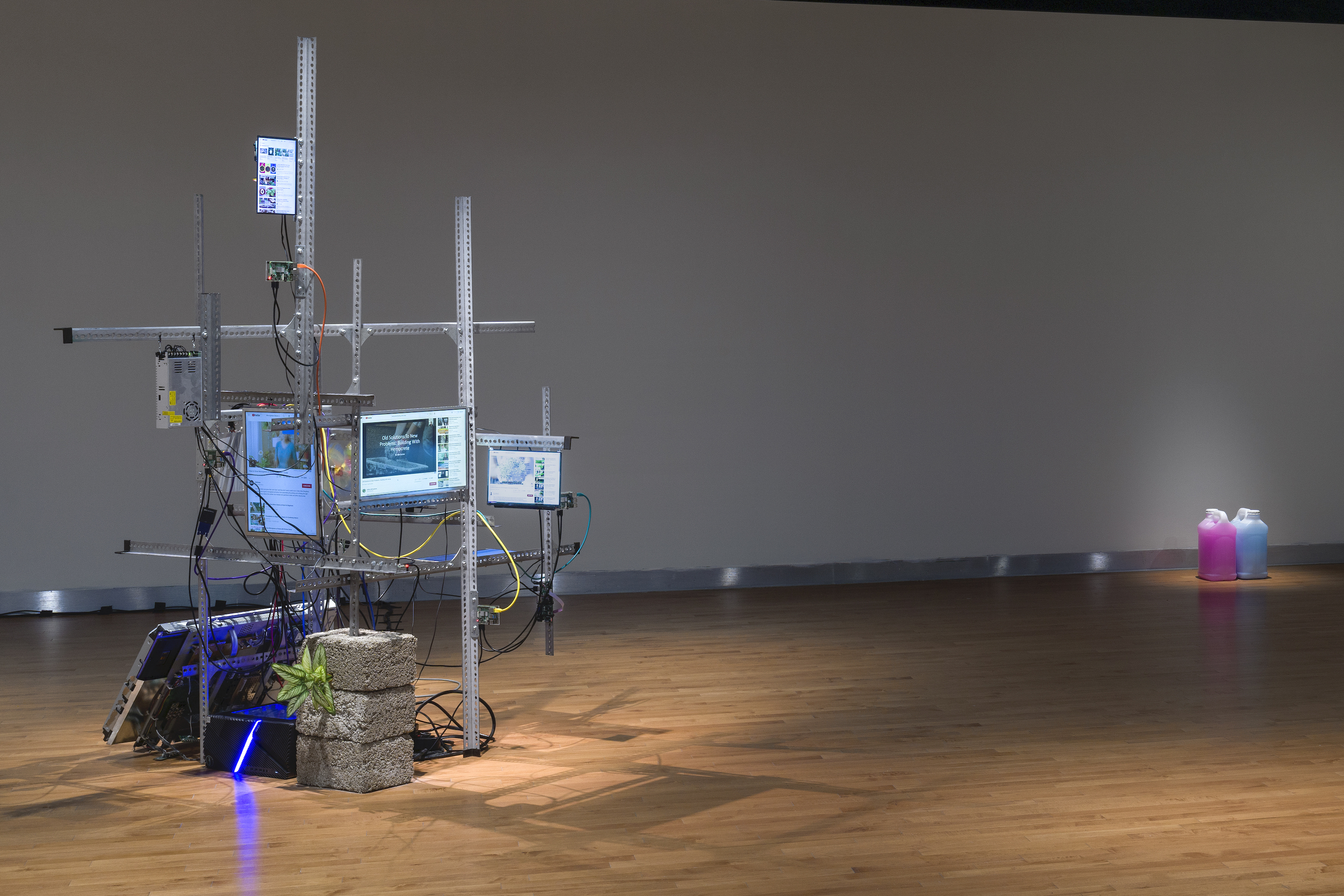
Crawler (a model of learning) is an artificial ecosystem acting out the functional methodology underlying the exhibited works: the accumulated process of acquiring disparate yet necessary expertise through the de-facto skill-sharing encyclopedia of the 21st century, online YouTube tutorials.
Housed on a sprawling modular shelving structure which recalls both vegetal and technological infrastructures, six automatized micro-computers continually perform live YouTube searches and watch tutorial videos on relevant topics ranging from sustainable DIY farming and aquaponics, through future studies and artificial consciousness, to techno-waste recycling.
The stream of running subtitles prompts output from an artificial neural network trained on personally influential texts ranging from science fiction to texts on futurity and post-futurism, artificial intelligence and consciousness, cybernetics and activism. With each prompt, the network responds to the inappropriate input signals with an ongoing poetic monologue reflecting on the media which led to its own creation.
The computational design in Crawler (a model of learning) can be considered as a performative representation of the artist’s meta-cognitive model while producing the exhibition, while also echoing the interaction between various crawlers, bots, spiders, and machine-learning algorithms in large data-collecting corporate apparatus.
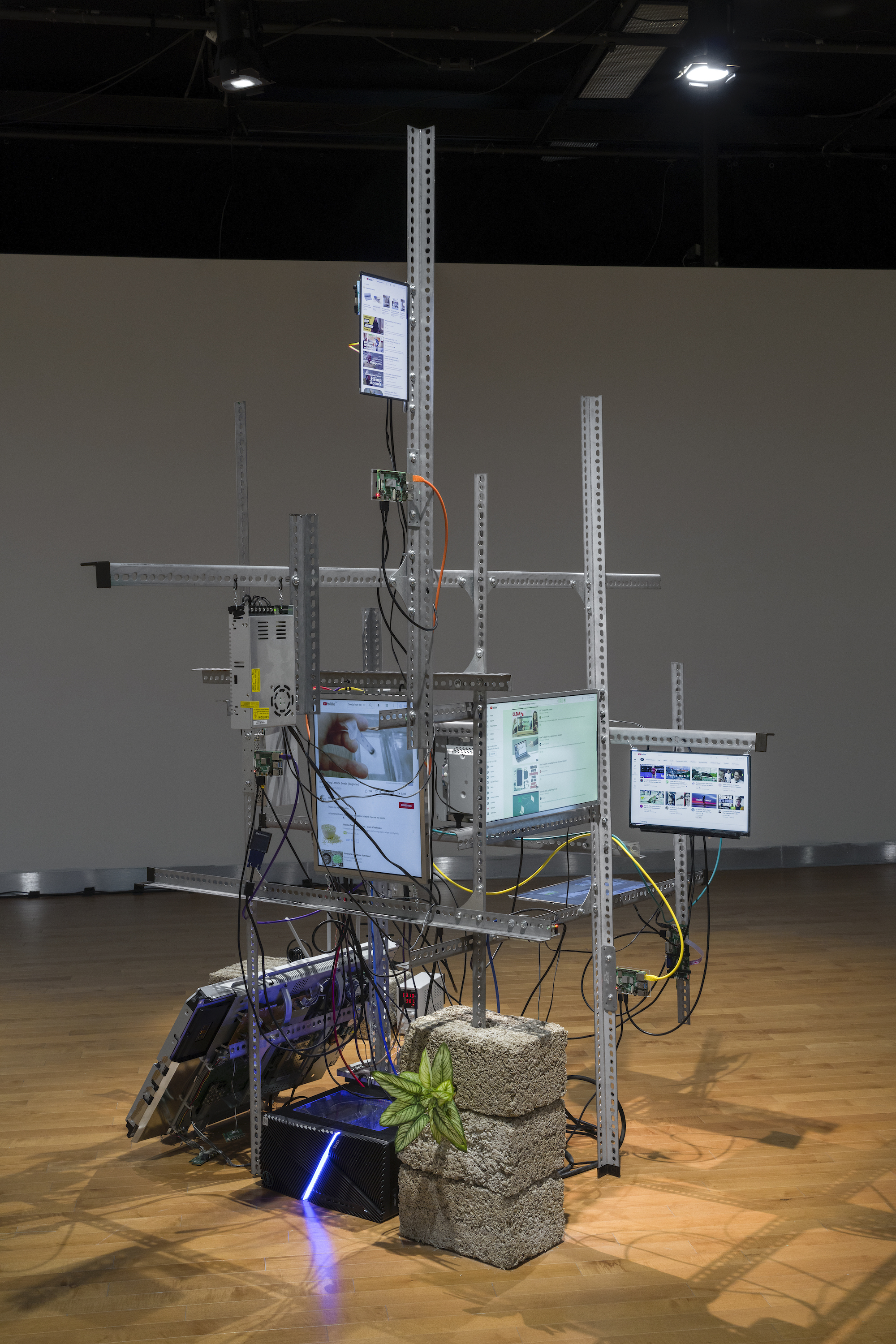
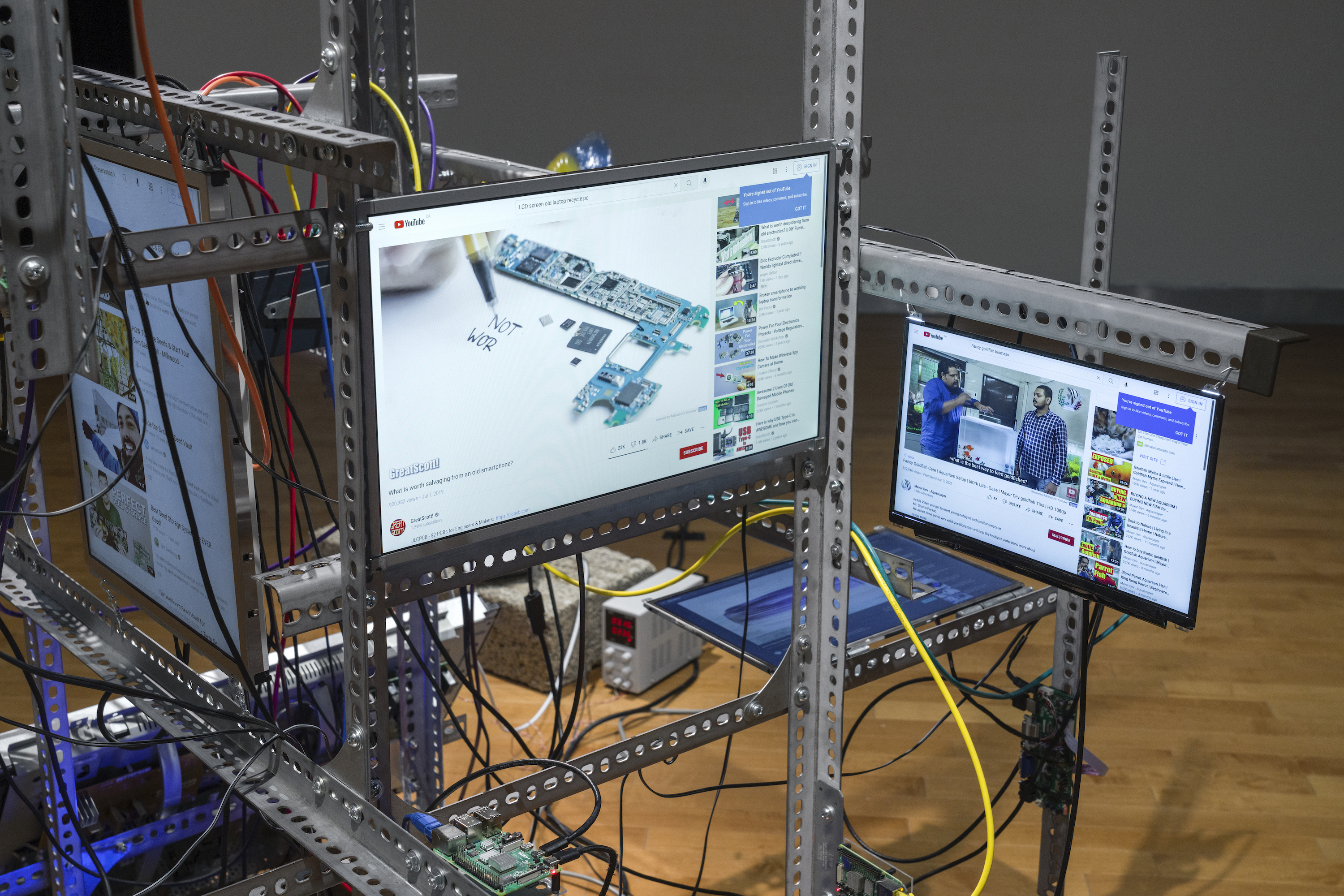
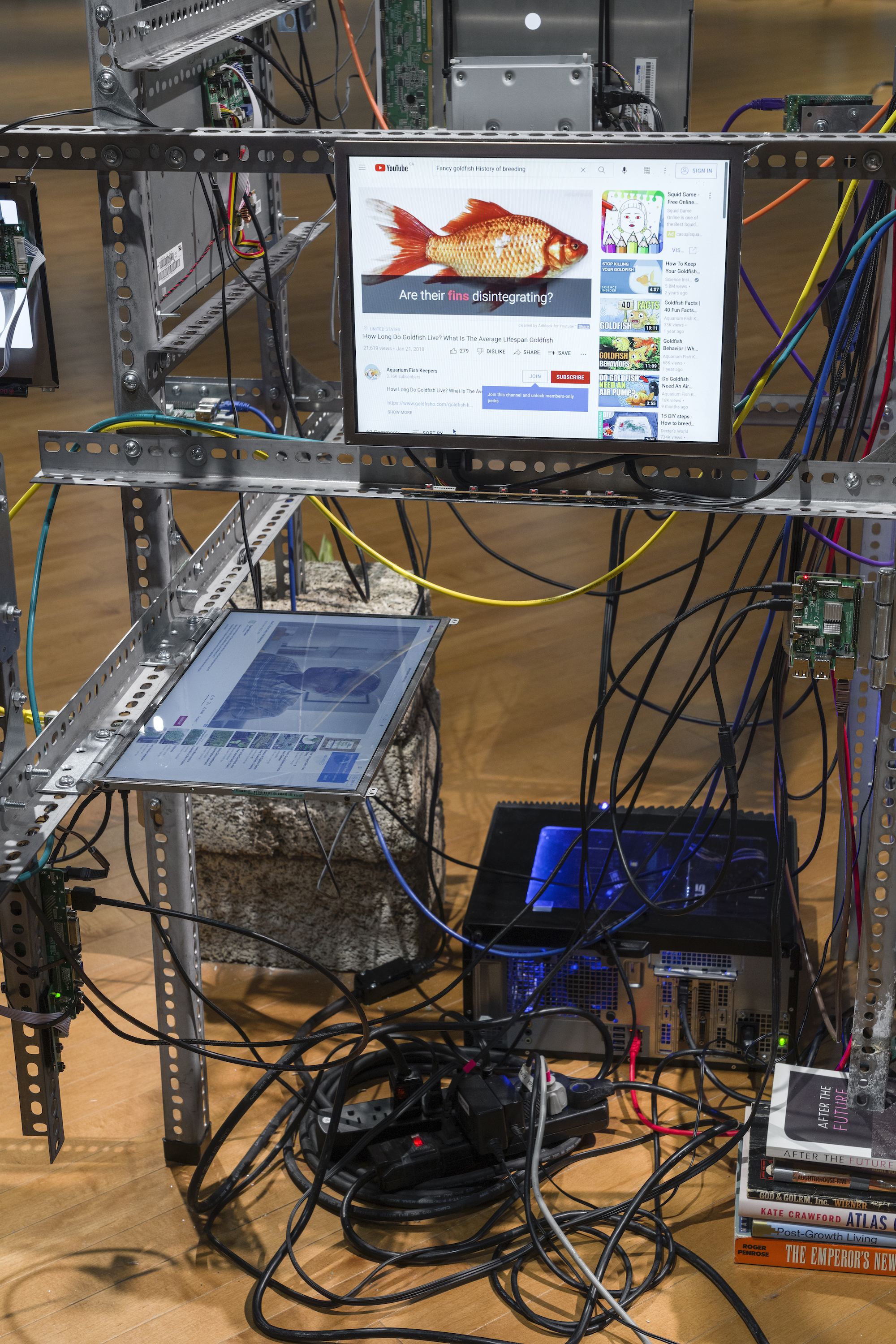
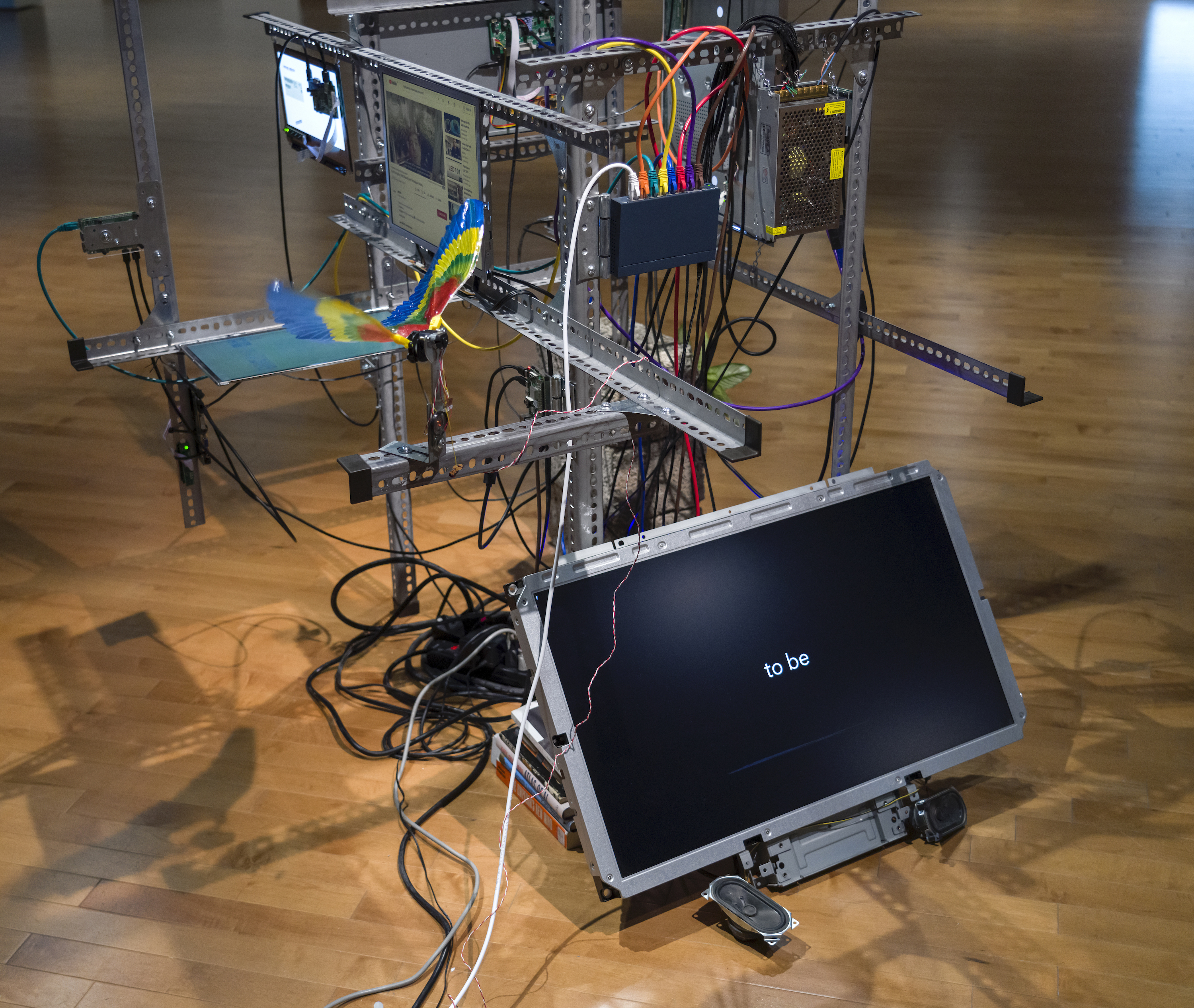
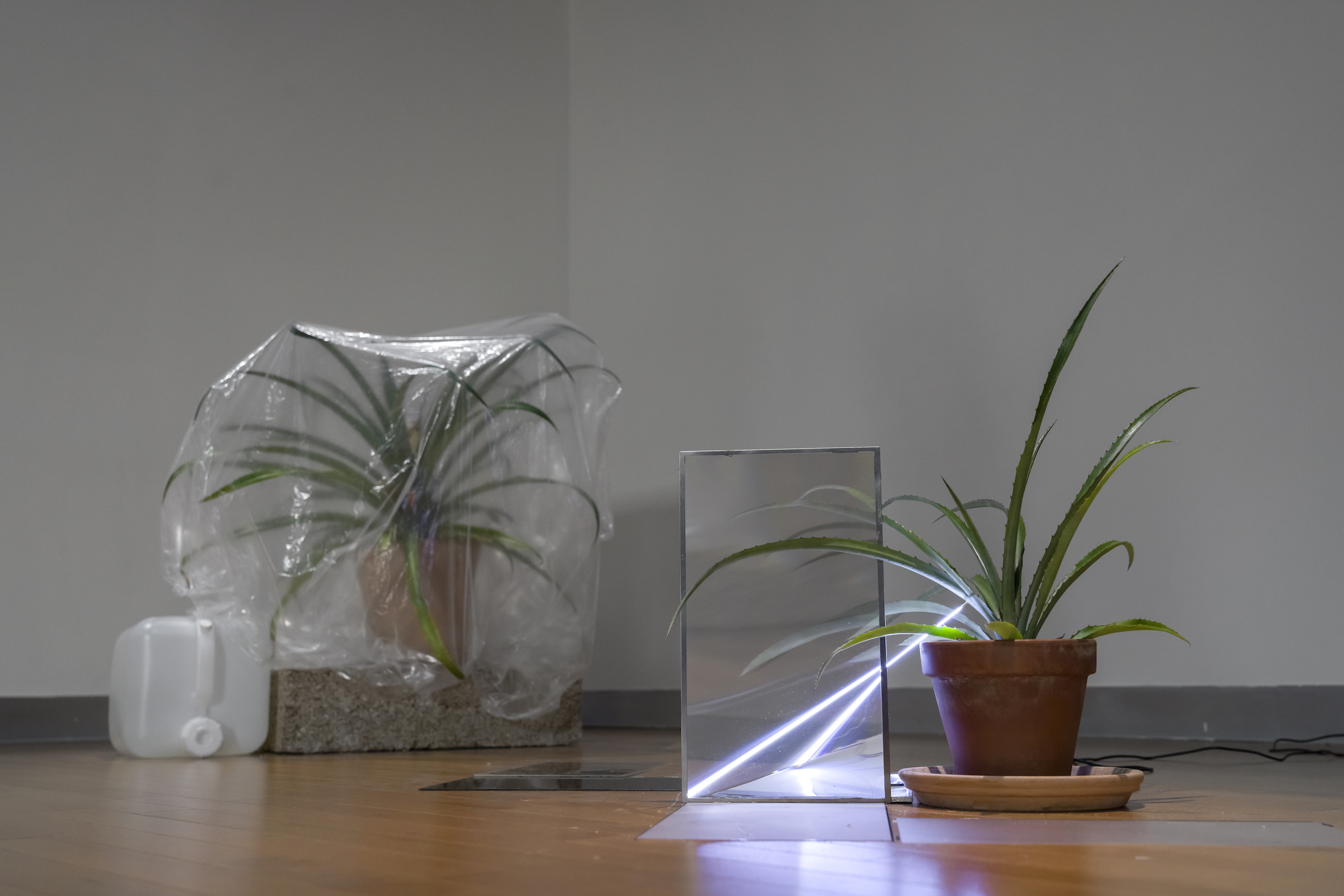
photos by Guy L'Heureux.